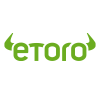Blockchain-Based Debt Protocol Obligate Records First Bond Issuance on Polygon Network
Swiss commodities trading firm Muff Trading AG issued corporate bonds using Obligate’s decentralized finance platform, which is set to open to the public on March 27.



:quality(70)/cloudfront-us-east-1.images.arcpublishing.com/coindesk/33ZHJXNCYRD3HLJNNA4CYPO5KI.jpg)
:quality(70)/cloudfront-us-east-1.images.arcpublishing.com/coindesk/YDV2LP47BRGAJNME3EDFQ5MCS4.png)
:quality(70)/cloudfront-us-east-1.images.arcpublishing.com/coindesk/TXHPRTLAGFDL5E5IERJIR2ISMU.png)
:format(jpg)/cloudfront-us-east-1.images.arcpublishing.com/coindesk/SWPGSD2NDVHKDHCUUFCLUIOZ54.png)
:format(jpg)/cloudfront-us-east-1.images.arcpublishing.com/coindesk/ZDC3FRMKDBCHDMRLSDPLCIVTUE.jpg)
:format(jpg)/cloudfront-us-east-1.images.arcpublishing.com/coindesk/RONYEB2JQ5A35FLPSB5QKK365U.jpg)